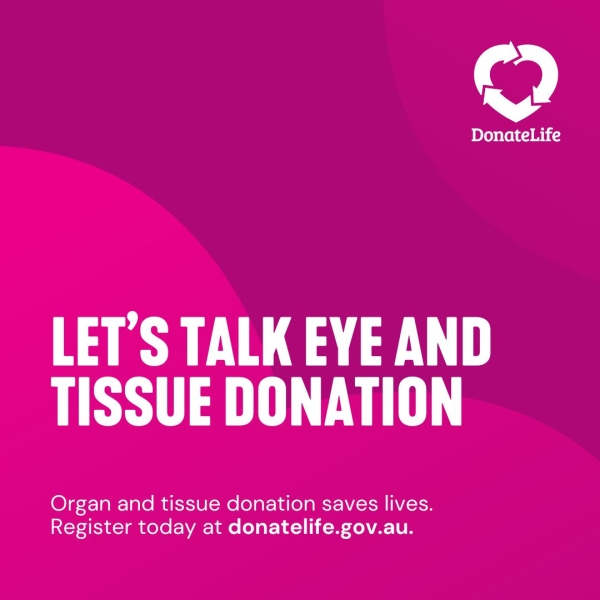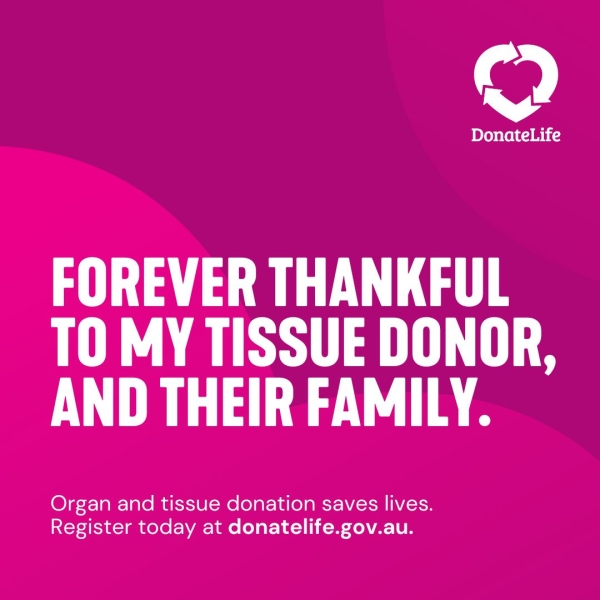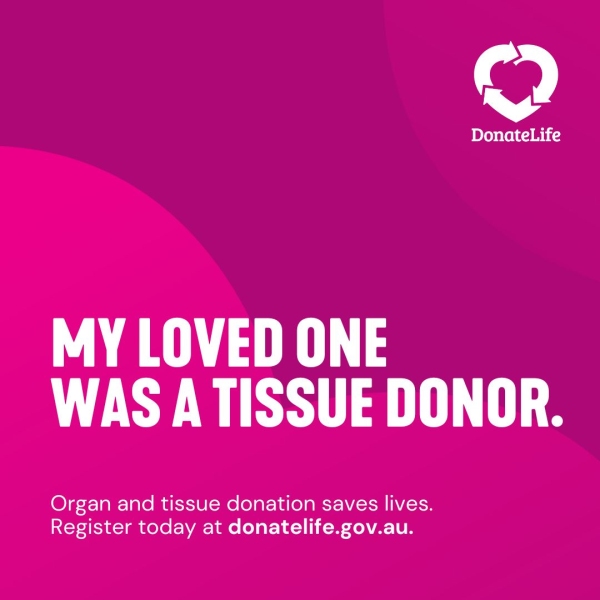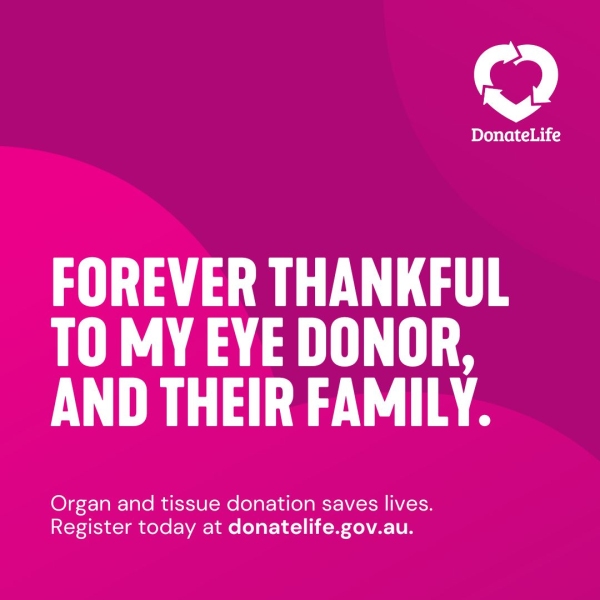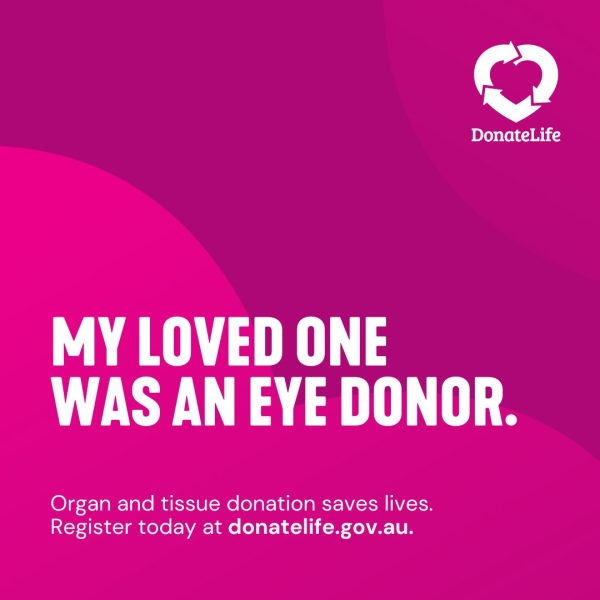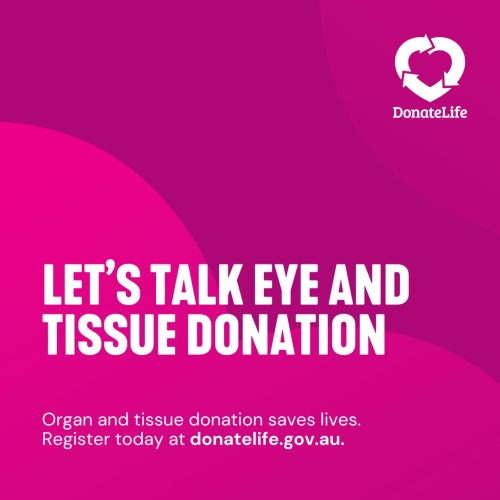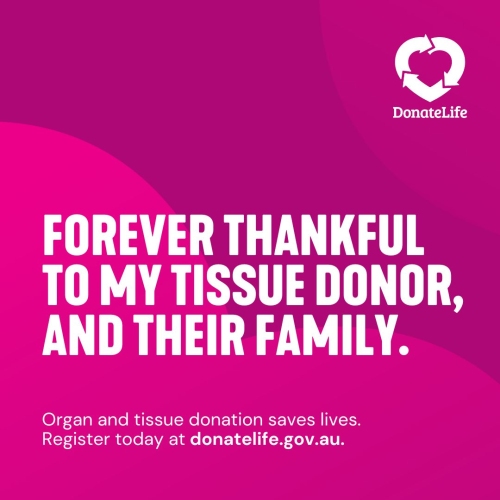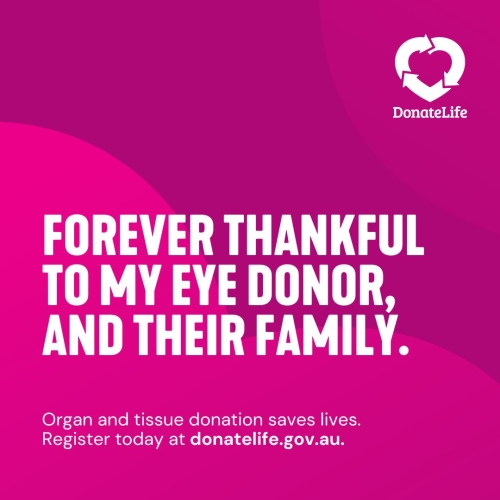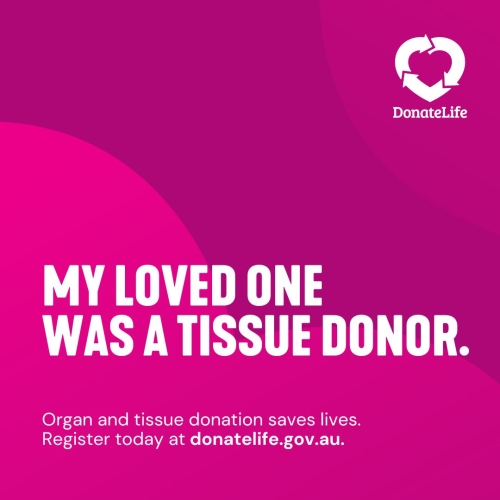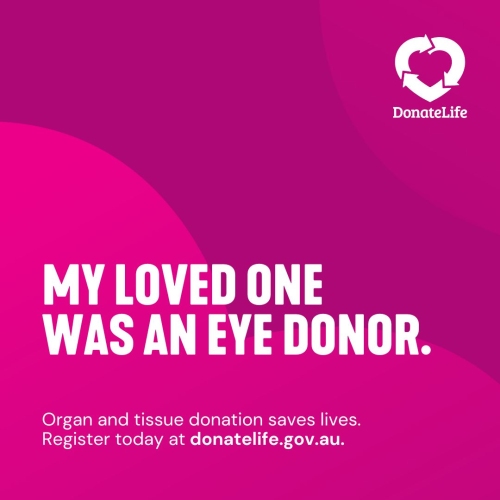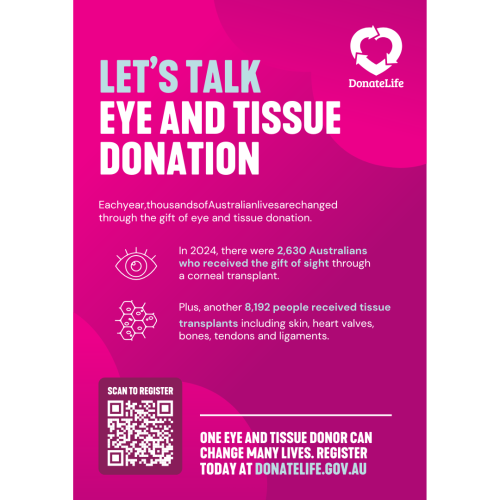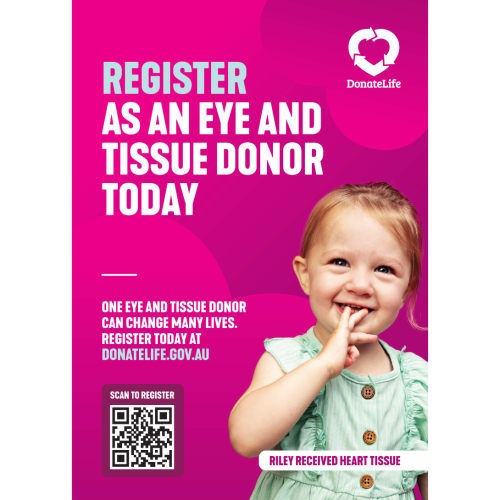Let's talk eye and tissue donation
Join us on social media where we’ll be busting myths, sharing stats and facts and showcasing some eye and tissue donation and transplantation stories.
Below you will find some resources to download and share across your own channels and within your communities. We also have links to our social channels with more shareable content and heart-warming stories.
About eye and tissue donation
Each year, thousands of Australian lives are changed through the gift of donated tissues, including eye tissue.
Tissue includes:
- skin
- parts of the eye, such as the cornea and sclera
- heart valves and other heart tissue
- bones, tendons and ligaments.
Compared to organ donation, many more people can become eye and tissue donors. This is because you don’t have to die in an ICU or a hospital to be considered for eye and tissue donation. Plus, donation can occur up to 24 hours after death.
Last year, 2,630 Australians received the gift of sight through a corneal transplant. An additional 8,192 people received tissue transplants. We thank all the living and deceased donors who gave the life-changing gift of donation.
Tissue donation saves and transforms lives in many ways. This includes saving burns victims, restoring sight, repairing heart abnormalities in babies and adults, rebuilding tendons and reconstructing bones.
Fast facts
- Eye and tissue donation can occur up to 24 hours after death and outside of an ICU or a hospital. This means many more Aussies can become tissue donors than organ donors.
- Bone tissue is the most transplanted tissue in Australia. Long bone tissues can be used to replace those destroyed by cancer, while smaller sections of bones can be milled and used to fill areas where bone has been lost e.g. in the spine.
- When eye tissue is donated, both the cornea and sclera can help those in need. The cornea is the clear window at the front of the eye and the sclera is the white part of the eye. Cornea restores sight while sclera is used for patch grafts, surgical reconstruction or in operations to treat glaucoma.
- Except for blood transfusion, corneal transplants are the oldest and most common form of human transplantation. Corneal transplants help restore vision in people who have damaged cornea. Damage can happen through infection, injury or diseases like keratoconus. Corneal transplants couldn’t happen without cornea donors.
- Skin donation isn’t just life-changing, it’s a life-saving donation. Around 50% of patients with large burns require donated skin to survive their injuries. Their injured tissue is removed and replaced with healthy tissue from a donor to protect the patient from infection until they are well enough to undergo definitive skin grafting. Without skin donation these burns patients would not survive their injuries.
Myth busters
- Myth: My face will look different if I donate my eyes.
Fact: Following eye donation, supports are put in place and the eye lids closed so no-one can tell your eyes have been donated. - Myth: Tissue donation will damage my body and my family won’t be able to say goodbye to me.
Fact: Tissue donation is treated like any other surgery, with surgical incisions closed and dressed with dignity and respect. You are still able to have an open-casket funeral after tissue donation. - Myth: I’m too old or my eyesight is too bad to donate my eyes.
Fact: Donor age is not that important – most eye donors are in their 70s. Eye donors can have any eye colour, blood type or level of eyesight.
What can be donated?
Skin: Can be used to treat serious burn injuries. Only the superficial layers of the skin are removed, normally taken from the legs or back of the torso. Skin is never removed from areas of the body that might interfere with viewings or clothing at the funeral.
Bones: Can be used to replace bones that need removal due to cancer, or to help repair bone damaged by accidents or disease. Bone grafts are usually taken from the limbs, where the contour is restored with only scars similar to a surgical intervention left behind.
Tendons: Can be used to replace torn or broken tendons and help to restore mobility, in mainly the knee and ankle. They can be taken from different areas, and as in bone donation, the body is treated with dignity and respect and is repaired with a surgical scar left behind.
Heart valves: Can be transplanted to treat children born with heart abnormalities and to replace damaged heart valves in adults.
Cornea: This is the transparent front part of the eye that covers the iris and pupil. Corneal grafts can be used to restore sight to blind or partially sighted people.
Sclera: This is the white part of the eye. Sclera donation can be used as patch grafts, in surgical eye reconstruction or in operations to treat glaucoma.
Share on social media
Let your friends and family know you're supporting eye and tissue donation. Share these messages on your social media.
